Beyond the Master Plan
Naracoorte Caves World Heritage Area 2013
Site Manager, Naracoorte and Tantanoola
Email: deborah.craven-carden@sa.gov.au
Abstract
Naracoorte Caves National Park (NCNP) is a renowned fossil mammal site, co-listed with Riversleigh, North Queensland as a UNESCO World Heritage Area.
Located in the southeast of South Australia it is one of four commercial sites operated under the jurisdiction of the Department of Environment, Water and Natural Resources (DEWNR). These sites operate businesses within distinctive natural settings and Master Planning is being conducted at each location, the recommendations of which will direct future investment.
In 2009 master planning began at Naracoorte.
In 2013 the planning will be completed.
Beyond 2013 DEWNR will implement recommendations from the Plan.
- These will enhance what is currently offered.
- Help enhance the business model.
- Improve productivity.
Australian Fossil Mammal Site, Naracoorte
In 1994 UNESCO determined Australia’s Naracoorte and Riversleigh fossil sites as being worthy of World Heritage entitlement and co-listed them as the ‘Australian Fossil Mammal Sites’. Riversleigh assemblages span the last 10 to 25 million years; Naracoorte’s representativeness is younger, being from 500,000 to 17,000 years.
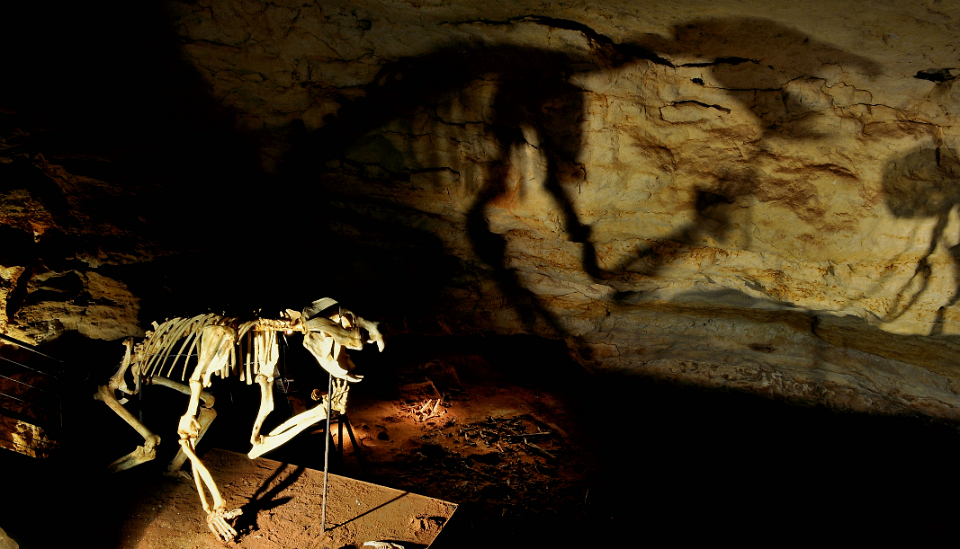
At the fossil bed, Victoria Fossil Cave (Smith) 2012

Map – Riversleigh and Naracoorte WH locations 2011

Naracoorte Caves National Park World Heritage Area 2012
Keeping the Outstanding Exceptional
Naracoorte’s Master Plan aims to clarify future directions, help fulfil obligations under the World Heritage Convention and ensure the World Heritage Area remains an integral part of the tapestry of tourism attractions in the Limestone Coast of SA. It aims to be a market leader by providing exceptional and innovative experiences and advancing the financial performance of the site by appealing to a broader range of visitor markets. It is interested in identifying opportunities for other parties to deliver visitor experiences at NCNP WHA.
Before the Master Plan
Prior to establishing its Master Plan process, DEWNR had conducted a review of its education programme (2009) and completed a Visitor Strategy (2010). In 2012 a Branding Strategy & Interpretive Framework was completed, followed by an Interpretive Framework.
Master Plan Reference Group
The reference group was established to facilitate input from key stakeholder groups – federal, state and local government, state museum, state and regional tourism, local business and tourism, regional development, education and science and Friends of Naracoorte Caves. A range of DEWNR staff are involved, including the site’s interpreters and café staff.
Consultants were appointed in 2012. The lead consultant was the designer of the Wonambi Fossil Centre and the Bat Teleview Centre and this history is invaluable.
Site development
For conceptual purposes the consultants divided the Park into four areas - the main Visitor Precinct, the Wirreanda campground & accommodation, the Victoria Fossil Cave Precinct and Stoney Point hiking area. Site development looks to improve the arrival experiences, upgrade car parks, enhance way-finding and improve linkages overall.
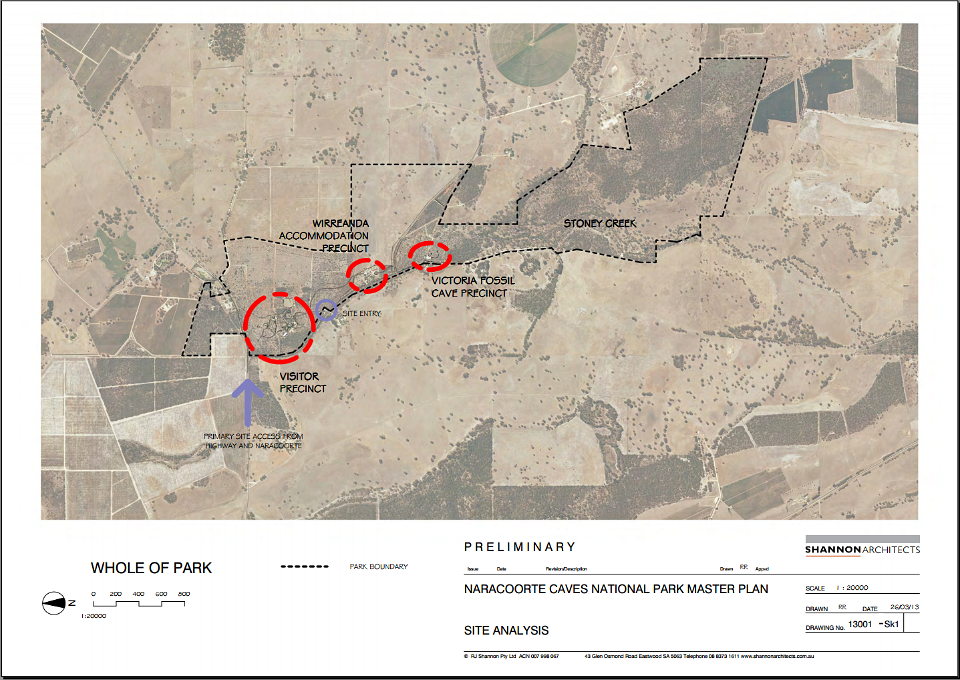
Shannon site development map 2012
Cave experiences
Naracoorte’s show cave experiences celebrate natural and cultural heritage, comprising science and research around extinct and existing animals, interpretation of human history and geological development and the results of scientific research.
The planning looks to enhance visitor experiences by giving site interpreters additional tools to expand their presentations. DEWNR is planning cave lighting upgrades and some infrastructure improvements. Novice and extended adventure caving activities have been an important part of the offer for many years and are not under Master Plan scrutiny except that they will become more visible, exciting visitor interest and increasing participation.
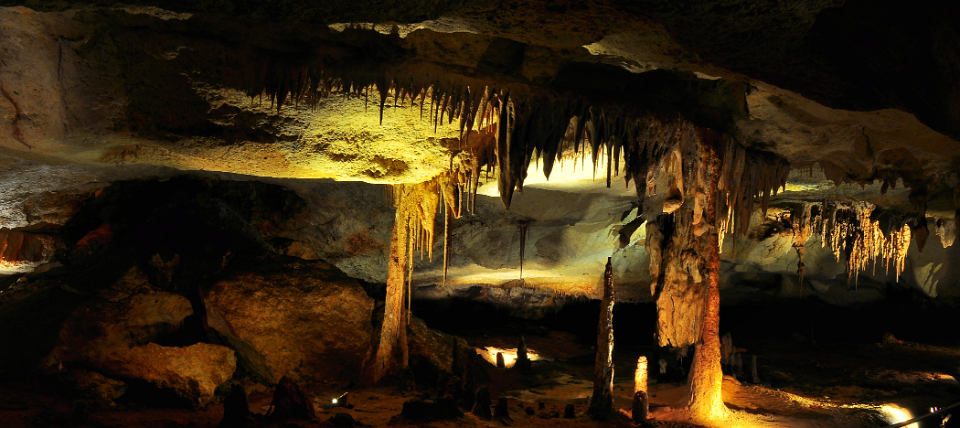
Alexandra Show Cave (Smith) 2012
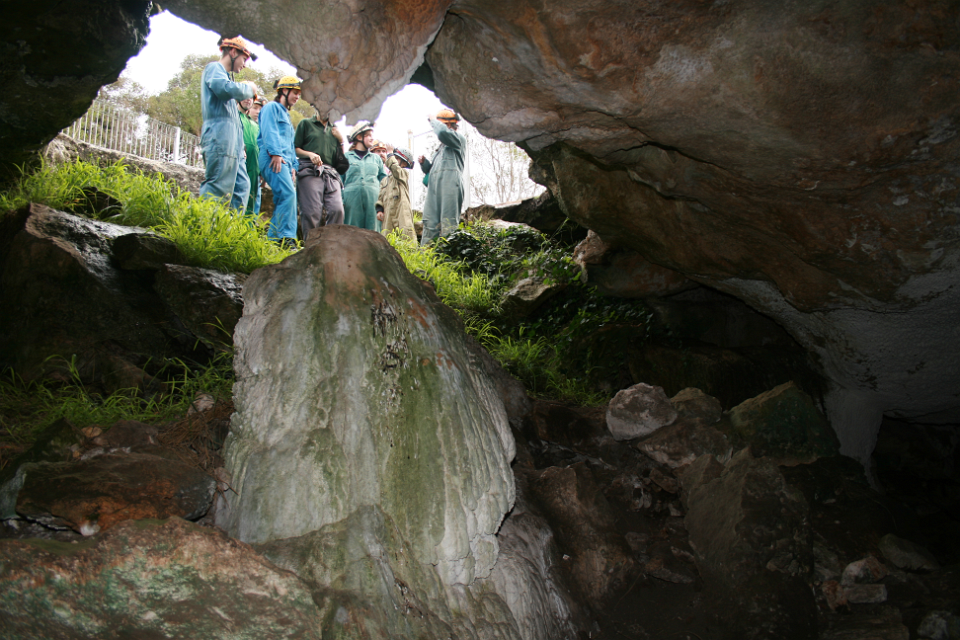
Blackberry novice adventure (Bourne) 2006
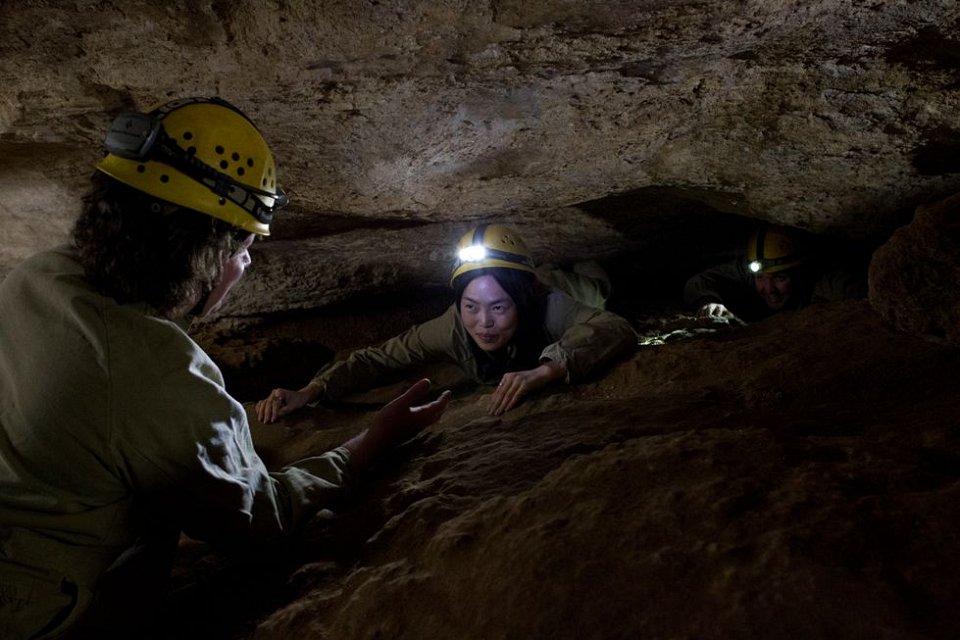
Stick-Tomato novice adventure (DEWNR) 2012
Built development
The Park’s ‘visitor’ buildings in the main precinct include a café, a teleview centre and a visitor centre (Caves Café, Bat Teleview, Wonambi Fossil Centre).
The Wirreanda camping and accommodation complex caters primarily to schools, but is available for other users.
The scope is to improve visibility and presentation and grow viability for the café, improve the interior of the bat centre and external connections between the centre and the rest of the site. Exhibitions and story telling in the Wonambi Fossil Centre will be revamped as little has changed since its inception.
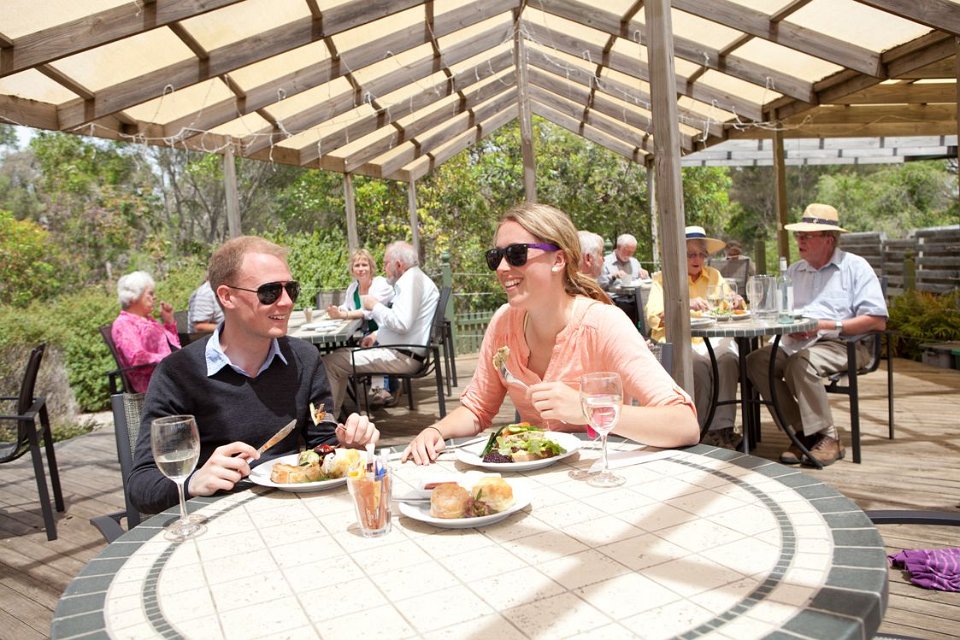
Caves Cafe (DEWNR) 2012
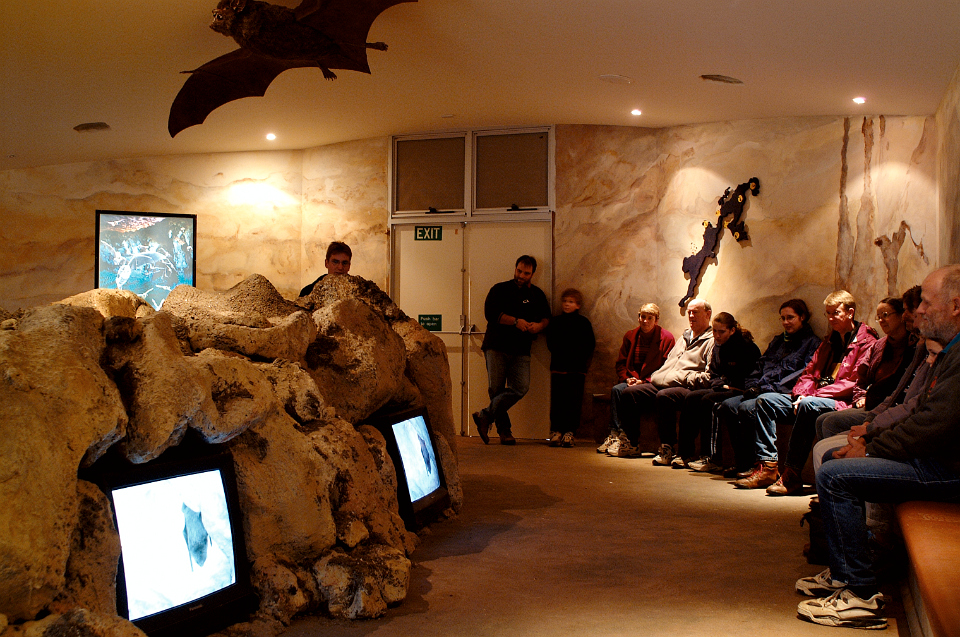
Bat Teleview Centre (Bourne) 2002
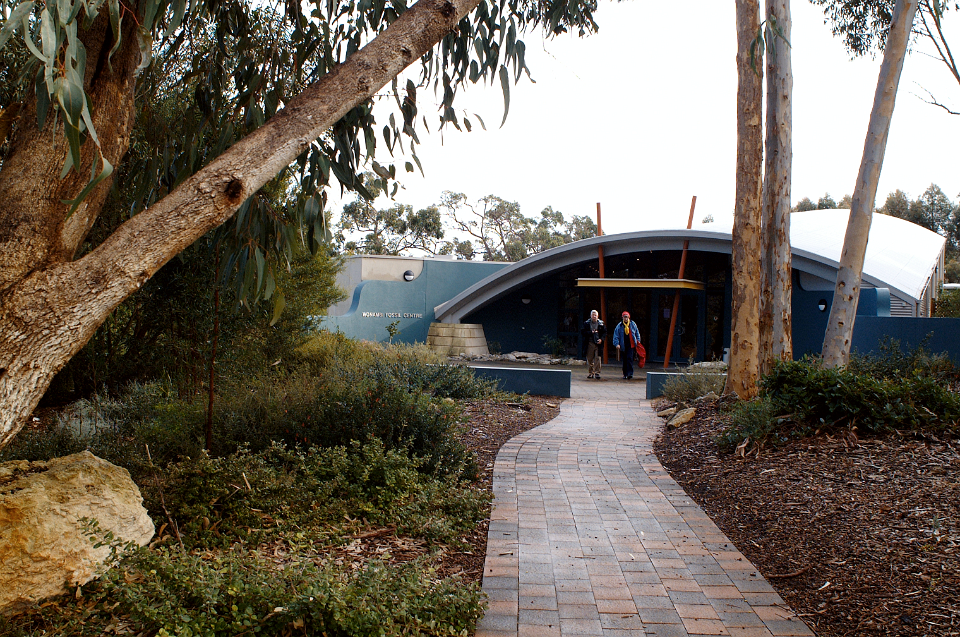
Wonambi Fossil Centre (Bourne) 2002
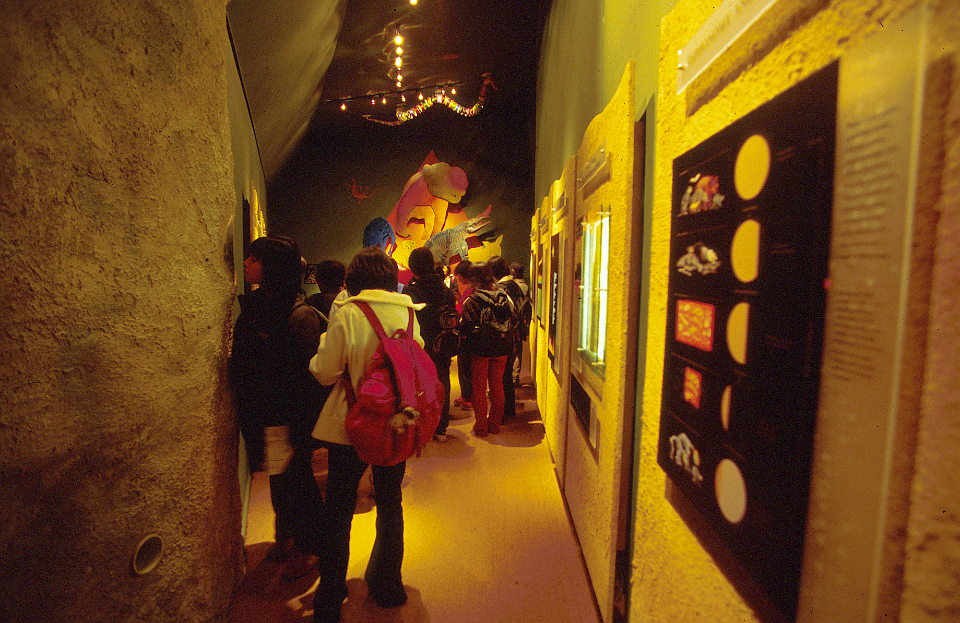
Flinders Gallery (Bourne) 1999

Diprotodon WFC (Bourne) 2003
The Triple Bottom Line
As a government agency DEWNR operates under a public sector financial model governed by strict rules required for handling public money. The three ‘Ps, ‘people, profit and planet’ are as essential to Naracoorte Caves’ business success as to any business, private or public. As an environmental land manager DEWNR’s role is to protect and conserve the natural and cultural resource under its administration, benefiting present and future generations. The philosophy of ‘planet’ is inherent in DEWNR’s mandate. The principle of ‘profit’ is possibly the surprise, but being profitable or cost neutral means the job of protection and conservation is conducted with lesser pressure on the public purse.
‘People’ of course, are of prime importance whatever the business model.
People (social)
Internally the ‘people’ component strives for a climate of empowerment and a culture of openness and respect between staff at all levels. The key is to have motivated people with high level customer service skills, ability with social interaction and a willingness to use their initiative. Staff with these characteristics are sought, trained and retained. Good policies, processes and practices support staff endeavours.
As a publicly funded agency DEWNR has a community service obligation (CSO). Active and consistent engagement with its communities of interest is essential for building and sustaining strong external relationships and fulfilling the obligation. Key stakeholders comprise local, regional, national and international communities. Friends of Caves are active volunteers who put hours of time and effort into the Park. Tourism at all levels acknowledges the importance and relevance to economy of a World Heritage site. Science and education sectors utilise the site.
Profit (economic)
Presenting a first class site with high-level customer service and interesting and enjoyable activities that enchant visitors is the key to a profitable outcome. Behind the ‘enchanting’ of visitors is the serious business of needing to understand their motivations and spending drivers. DEWNR seeks to improve its cost structures, increase profitability and expand revenue opportunities. It must be aware that public agencies can be viewed as having an unfair competitive advantage and this need for neutrality means its entrepreneurship has constraints not felt by private enterprise.
Planet (environment)
As a public land manager the requirement to protect and conserve the Park’s natural and cultural assets is a matter of course. Staff look to achieve consistent environmental management practices and should lead by example. Active engagement with key stakeholders meets the challenges of providing access to the National Park within the confines of protection, and meeting World Heritage obligations. The main tools are to educate, inform and build awareness of the resource values and why impact mitigation is essential. Strong partnerships such as with Friends of Caves engender pride in the assets and helps build a support system that filters into the wider community.
Live Attractions
A living attraction at NCNP WHA is Miniopterus Schreibersii Bassanii, the Southern Bentwing bat. An endangered species, they breed at NCNP WHA. For many years a South Australia Museum based expert has been providing advice and opinion on the bats. The Friends group is involved with monitoring the population. In 2012 an American Fulbright scholar spent the year at Naracoorte Caves undertaking what has become a baseline population monitoring record. A volunteer is continuing the monitoring in 2013 supported by FONC. All this is fed into site interpretation.

Pink Bat(t)s on the ceiling, Bat Cave, (Bourne) 2003
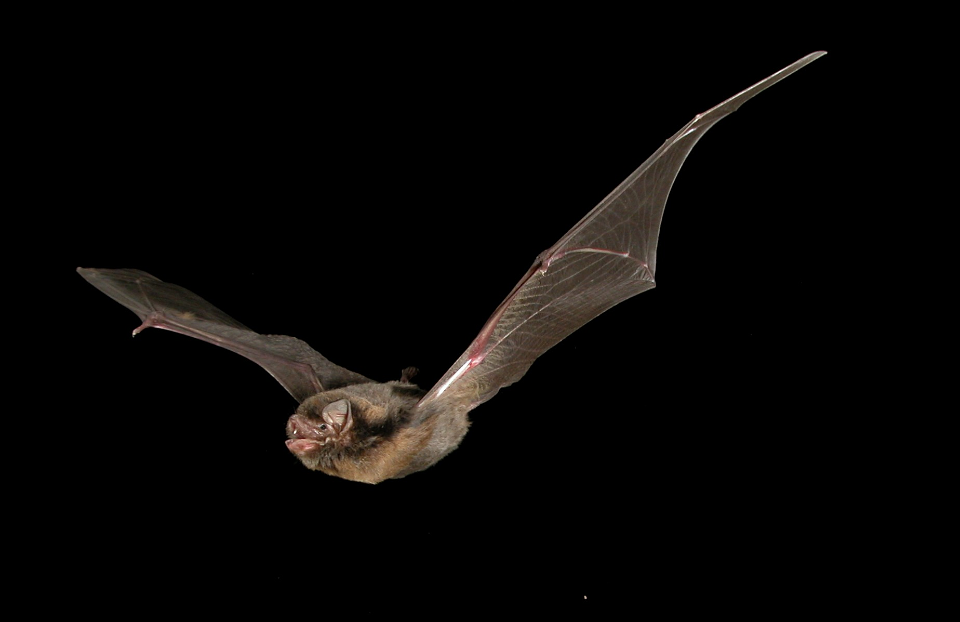
Miniopterus Schreibersii Bassanii, the Southern Bentwing bat (DEH) 1980
Science and research
Palaeontological involvement at the site has been undertaken in some shape or form since the discovery of the fossil deposits in1969. The most recent work investigated past climate change hoping to identify patterns of change and how these affect the resilience of ecological communities through time. The lessons learnt should help site management and interpret findings to a wide audience.

‘Under the Ledge’, Victoria Fossil Cave (Bourne) 2003
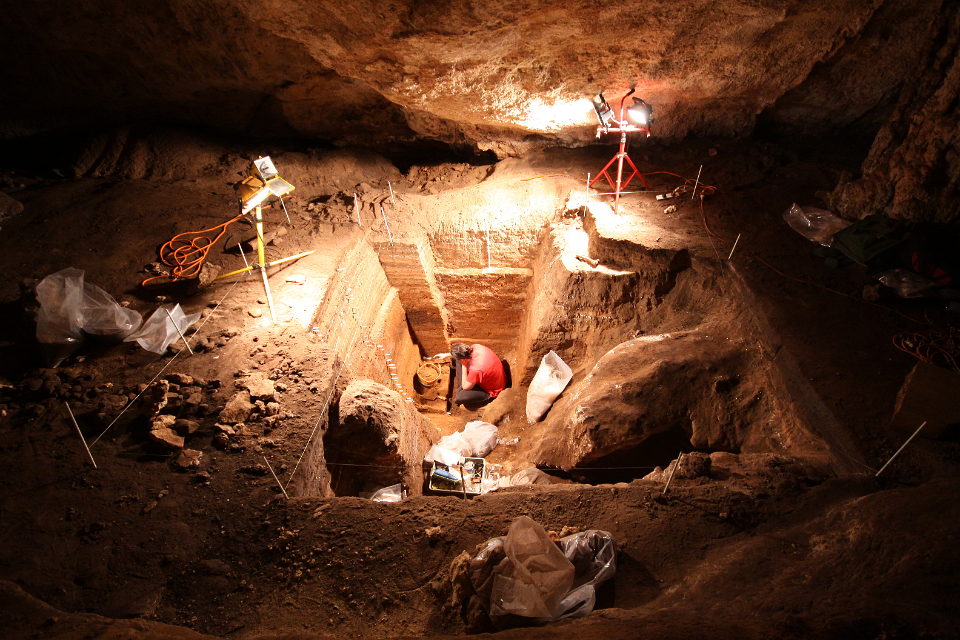
Third Blanche Cave excavation ‘Caring for our Country’ (Bourne) 2012
Threats – controls and mitigations
Threats come primarily from significant natural events and humans. Low resilience thresholds are characteristic of cave values and the fossils and the fossil deposits are similarly fragile. Management response against human impact is to control access, require DEWNR permits and EPBC referrals, have properly planned projects, maintain fencing and gates and have trained staff.
There is no formal buffer zone around NCNP WHA and to date this has not been an issue.
Adjacent landowners include forestry, farming and vineyards. In 2011 many small reserve areas adjacent to the NCNP WHA were incorporated into the Park, adding a further measure of protection.
Flooding from major rainfall events has affected the integrity of research excavations but also provided an understanding of how such events worked in times gone by.
Wildfire is a potential threat and DEWNR’s regional Park staff have the responsibility for fire management systems. A recent practical response has been to reduce fuel load adjacent to the visitor precinct. Pest plants and animals are an issue. FONC assist DEWNR in control of pest plants while pest animal control is a DEWNR task.
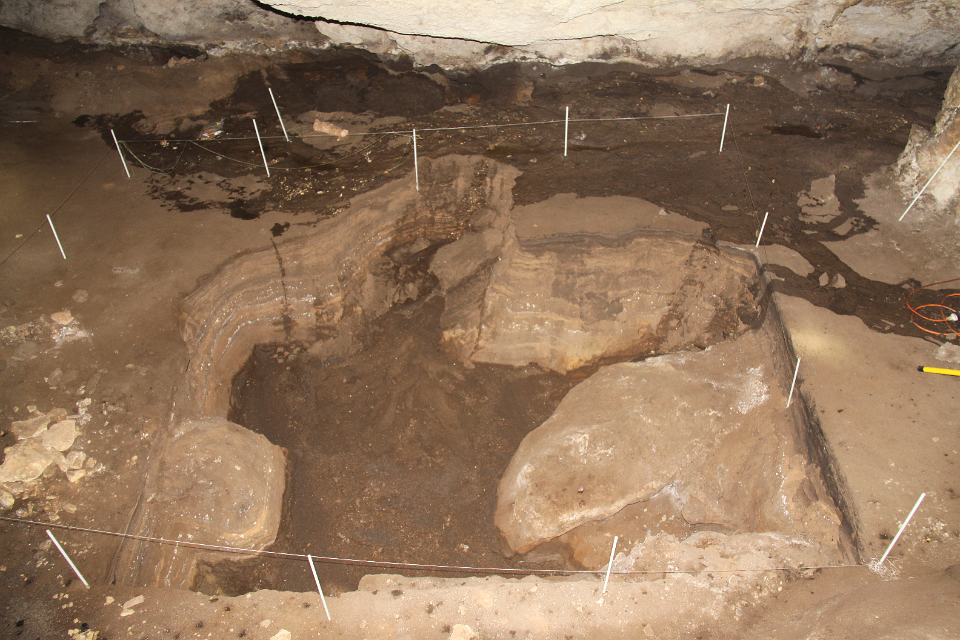
Flooding of the second Blanche Cave excavation (DEWNR) 2010
Conclusion
The Australian Fossil Mammal Sites Naracoorte and Riversleigh are outstanding representations of major stages of the earth’s history, including the record of life. Both sites provide complimentary evidence of key stages in the evolution of the fauna on one of the world’s most isolated continents.
To maintain the outstanding universal values at Naracoorte Caves National Park and World Heritage Area the ‘triple bottom line’ approach delivers real benefit.
It is the only true way a national park and/or a world heritage area can fulfil its protection and conservation obligations while sustaining staff capability and achieving the best value it can for taxpayers’ money.
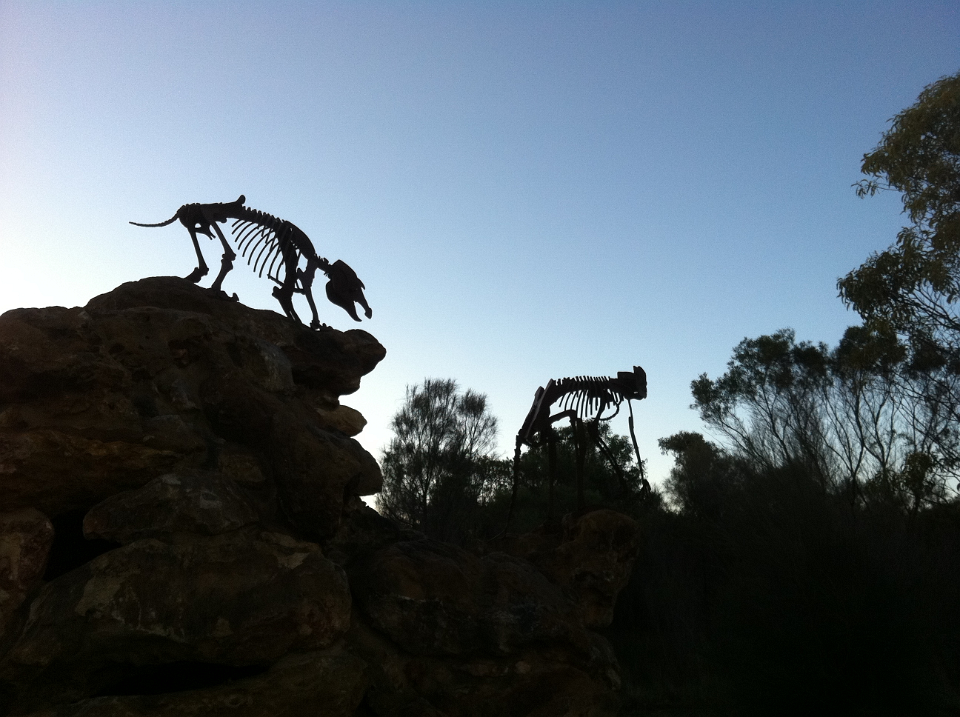
NCNP WHA Entrance (DEWNR) 2012
Acknowledgements and thanks
- Steve Bourne, Margaret Smith & DEWNR for photographs
- The Commonwealth for ‘Caring for Our Country’ funding and Flinders University for undertaking the research
- DEWNR planning colleagues, the Consultants and the NCMP Reference Group
- DEWNR finance colleagues for conversations on ‘The Triple Bottom Line’
- Friends of Naracoorte Caves for being best friends
- Naracoorte Caves National Park World Heritage staff who ‘care for our country’